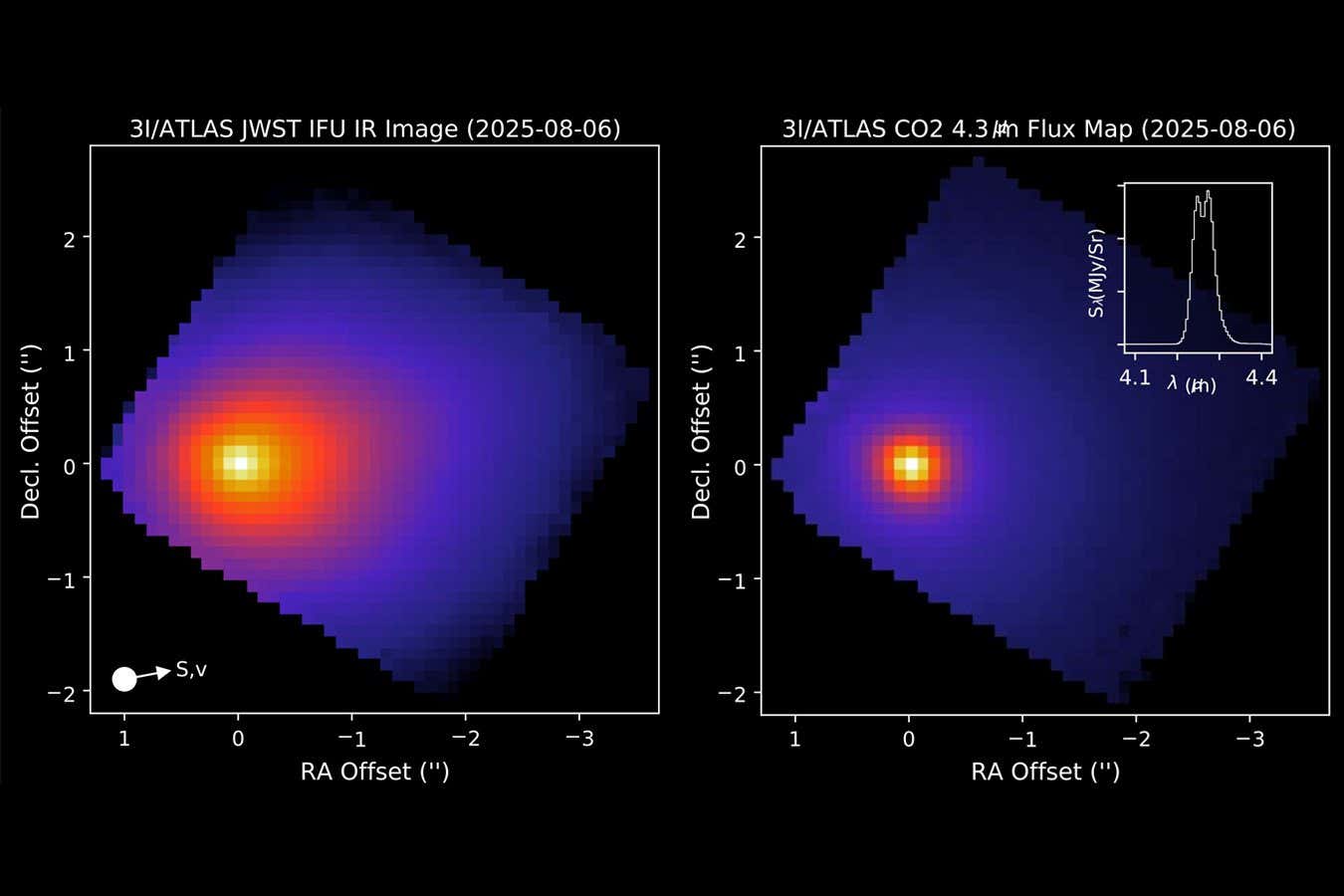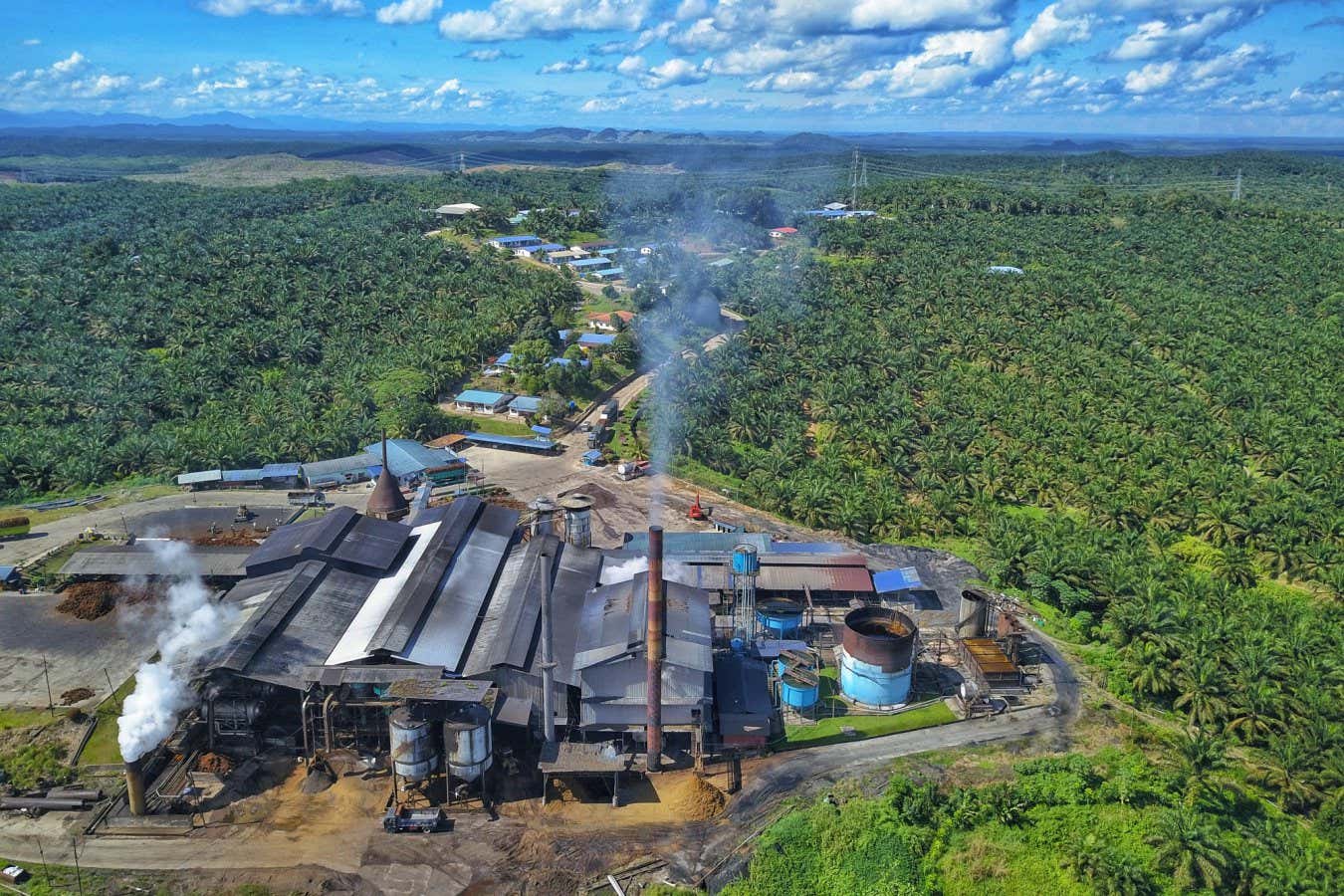Now Reading: JWST Offers Insightful Glimpse of Interstellar Comet 3I/ATLAS
1
-
01
JWST Offers Insightful Glimpse of Interstellar Comet 3I/ATLAS
JWST Offers Insightful Glimpse of Interstellar Comet 3I/ATLAS

Quick Summary
- Interstellar comet 3I/ATLAS: Observations from the James Webb Space telescope reveal it is one of the most carbon dioxide-rich comets ever documented, with a CO₂-to-water ratio of 8:1-16 times higher then solar system comets at similar distances from the sun.
- Finding: Found zipping through our solar system at high speed as July. Initial studies suggested a typical comet but hinted at exotic origins due to unusual water gas production far from the sun.
- Recent observations: Conducted in early August when the comet was about three times Earth’s distance from the sun. At this range, temperatures typically allow ice to sublimate into gas, forming water-rich plumes called comas, but 3I/ATLAS displayed different behavior with high CO₂ levels.
- Implications for origin: Researchers suggest it may have formed in an environment where CO₂ ice was more prevalent than water ice-possibly indicating differences in planetary system formation compared to our own solar system or other exotic scenarios like passing close to another star.
Stay Informed With the Latest & Most Important News
Previous Post
Next Post
Loading Next Post...
























